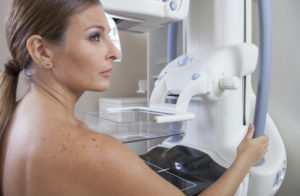Donuts, Bagels, Claustrophobia and MRIs
 For people with severe claustrophobia, MRIs can be intimidating. Even people who are only mildly claustrophobic may find MRI exams stressful – but they don’t have to!
For people with severe claustrophobia, MRIs can be intimidating. Even people who are only mildly claustrophobic may find MRI exams stressful – but they don’t have to!
The best imaging technologists and radiologists will always work with patients to provide feelings of safety and comfort during MRI procedures.
The first step in managing stress and claustrophobia comes in arming yourself with information. Information on how long the exam will take and how you will be positioned in the magnet can help prepare you.
Here are a few tips and tricks for the time you may find yourself in a donut-shaped machine:
- For many with mild claustrophobia, two things will help the most: covering your eyes and practicing visualization exercises. While this may sound “new age”, these sorts of mental exercises have been shown to get people through their MRIs. The best thing is to concentrate on breathing and on visualizing in your mind a calm, open space – one you find restful. Get that picture in your mind – a beach, a meadow, a mountain slope – someplace wide open. Get the smells and sounds in your mind as well. Keep coming back to it – it will work! This in conjunction with talking with the technologist throughout the study will get you through the test in no time.
- Because MRIs are loud, ear protection is provided. Some clinics offer music as well, which can be calming.
- If the above isn’t working, consider asking for a procedure done on an open bore magnet – the latest in technology is a more open cylinder design, still with a high field strength magnet (our Olathe clinic has such a machine!). True open MRI units may be an option as well, but those may be lower strength magnets and imaging times can be longer!
- If claustrophobia is still an issue, you may need to seek some help from your doctor or the radiologist. Some doctors who refer patients with claustrophobia for an MRI will write for a prescription for an anti-anxiety medication, like valium, to be taken prior to imaging. At some facilities, your radiologist will be able to provide medication, often Xanax, but make sure this is discussed with the facility beforehand as it may mean changes in how your prepare for the study, and it will require you to have someone available to drive you – no machine operating after these types of anti-anxiety meds!
Armed with this knowledge and the help of caring technologists and staff, you can survive the MRI experience. And with medical imaging comes the ability to diagnose and get you on the road to your best possible health!
Plain Bagel by Evan-Amos (Own work) [Public domain], via Wikimedia Commons
Originally published 10/29/14 on diagnosticimagingcenterskc.com.





